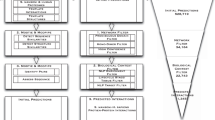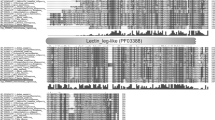Abstract
Schistosomes cause schistosomiasis disease which severely threatens human health. Little is known about the functions of EF-hand domain containing schistosomes tegument proteins other than as antigens. More possible functions of these tegument proteins were investigated with in silico analyses including protein-protein functional interaction, site-specific variation and glycosylation modification. The analysis results suggested that schistosomes could actively modulate host immune responses for its own favor through functional interactions with host proteins with immunomodulatory function, and passively regulate host immune responses through sequence variation under positive selection and glycosylating the recognition sites of host immune attack. In addition, the analysis of the C-terminal domain of these tegument proteins indicated that they could assist schistosomes in escaping host immune attacks through inhibiting chemotaxis and non-complement fixing antibody (IgG4) responses. In summary, our results suggested that these tegument antigen proteins could assist schistosomes in escaping and modulating host immune responses for self-protection during the process of host-parasite interaction.
Similar content being viewed by others
References
Engels D, Chitsulo L, Montresor A, et al. The global epidemiological situation of schistosomiasis and new approaches to control and research. Acta Trop, 2002, 82(2): 139–146
McLaren D J, Hockley D J. Blood flukes have a double outer membrane. Nature, 1977, 269(5624): 147–149
Van IIellemond J J, Retra K, Brouwers J F, et al. Functions of the tegument of schistosomes: Clues from the proteome and lipidome. Int J Parasitol, 2006, 36(6): 691–699
Braschi S, Curwen R S, Ashton P D, et al. The tegument surface membranes of the human blood parasite Schistosoma mansoni: A protcomic analysis after differential extraction. Protcomics, 2006, 6(5): 1471–1482
Perez-Sanchez R, Ramajo-Hermandez A, Ramajo-Martin V, et al. Proteomic analysis of the tegument and excretory-secretory products of adult Schistosoma bovis worms. Protcomics, 2006, 6(Suppl 1): S226–S236
Mohamed M M, Shalaby K A, LoVerde P T, et al. Characterization of Sm20.8, a member of a family of schistosome legumental antigens. Mol Biochem Parasitol, 1998, 96(1–2): 15–25
Taylor D A, Sack J S, Maune J F, et al. Structure of a recombinant calmodulin from Drosophila melanogaster refined at 2.2-A resolution. J Biol Chem, 1991, 266(32): 21375–21380
Kuo H J, Tran N T, Clary S A, et al. Characterization of EHD4, an EH domain-containing protein expressed in the extracellular matrix. J Biol Chem, 2001, 276(46): 43103–43110
Hafalla J C, Alamares J G, 2nd, Acosta L P, et al. Molecular identification of a 21.7 kDa schistosoma japonicum antigen as a target of the human IgE response. Mol Biochem Parasitol, 1999, 98(1): 157–161
Santiago M L, Hafalla J C, Kurtis J D, et al. Identification of the Schistosoma japonicum 22.6-kDa antigen as a major target of the human IgE response: Similarity of IgE-binding epitopes to allergen peptides. Int Arch Allergy Immunol, 1998, 117(2):94–104
Fitzsimmons C M, Stewart T J, Hoffmann K F, et al. Human IgE response to the Schistosoma haematobium 22.6 kDa antigen. Parasite Immunol, 2004, 26(8–9): 371–376
Ruiz de Eguino A D, Mafchin A, Casais R, et al. Cloning and expression in Escherichia coli of a Fasciola hepatica gene encoding a calcium-binding protein. Mol Biochem Parasitol, 1999, 101(1–2): 13–21
Vichasri-Grams S, Subpipattana P, Sobhon P, et al. An analysis of the calcium-binding protein 1 of Fasciola gigantica with a comparison to its homologs in the phylum Platyhelminthes. Mol Biochem Parasitol, 2006, 146(1): 10–23
Francis P, Bickle Q. Cloning of a 21.7-kDa vaccine-dominant antigen gene of Schistosoma mansoni reveals an EF hand-like motif. Mol Biochem Parasitol, 1992, 50(2): 215–224
Kumar S, Tamura K, Nei M. MEGA3: Integrated software for molecular evolutionary genetics analysis and sequence alignment. Brief Bioinform, 2004, 5(2): 150–163
Yang Z. PAML: A program package for phylogenetic analysis by maximum likelihood. Comput Appl Biosci, 1997, 13(5): 555–556
Krogh A, Larsson B, von Heijne G, et al. Predicting transmembrane protein topology with a hidden Markov model: Application to complete genomes. J Mol Biol, 2001, 305(3): 567–580
Bendtsen J D, Nielsen II, von IIeijne G, et al. Improved prediction of signal peptides: SignalP 3.0. J Mol Biol, 2004, 340(4): 783–795
Youssef P, Roth J, Frosch M, et al. Expression of myeloid related proteins (MRP) 8 and 14 and the MRP8/14 heterodimer in rheumatoid arthritis synovial membrane. J Rheumatol, 1999, 26(12): 2523–2528
Marti T, Erttmann K D, Gallin M Y. Host-parasite interaction in human onchocerciasis: Identification and sequence analysis of a novel human calgranulin. Biochem Biophys Res Commun, 1996, 221(2): 454–458
Kissinger C R, Parge II E, Knighton D R, et al. Crystal structures of human calcineurin and the human FKBP12-FK506-calcineurin complex. Nature, 1995, 378(6557): 641–644
Elshorst B, Hennig M, Forsterling H, et al. NMR solution structure of a complex of calmodulin with a binding peptide of the Ca2+ pump. Biochemistry, 1999, 38(38): 12320–12332
Liu F, Lu J, Hu W, et al. New perspectives on host-parasitc interplay by comparative transcriptomic and proteomic analyses of Schistosoma japonicum. PLoS Pathog, 2006, 2(4): c29
Vassylyev D G, Takeda S, Wakatsuki S, et al. Crystal structure of troponin C in complex with troponin I fragment at 2.3-A resolution. Proc Natl Acad Sci USA. 1998, 95(9): 4847–4852
Ortona E, Margutti P, Delunardo F, et al. Screening of an Echinococcus granulosus cDNA library with IgG4 from patients with cystic echinococcosis identifies a new tegumental protein involved in the immune escape. Clin Exp Immunol, 2005, 142(3): 528–538
Velupillai P, dos Reis E A, dos Reis M G, et al. Lewis(x)-containing oligosaccharide attenuates schistosome egg antigen-induced immune depression in human schistosomiasis. Hum Immunol, 2000, 61(3): 225–232
Simpson A J. Tegumental proteins of Schistosoma mansoni: Complex biomolecules and potent antigens. Mem Inst Oswaldo Cruz, 1992, 87(Suppl 4): 11–17
Tomescu C, Law W K, Kedes D II. Surface downregulation of major histocompatibility complex class I, PE-CAM, and ICAM-1 following de novo infection of endothelial cells with Kaposi’s sarcoma-associated herpesvirus. J Virol, 2003, 77(17): 9669–9684
Forsberg R, Christiansen F B. A codon-based model of host-specific selection in parasites, with an application to the influenza A virus. Mol Biol Evol, 2003, 20(8): 1252–1259
Gupta R, Jung E, Gooley A A, et al. Scanning the available Dictyostelium discoideum proteome for O-linked GlcNAc glycosylation sites using ncural networks. Glycobiology, 1999, 9(10): 1009–1022
Maurer-Stroh S, Gouda M, Novatchkova M, et al. MYRbase: Analysis of genomc-wide glycine myristoylation enlarges the functional spectrum of eukaryotic myristoylated proteins. Genome Biol, 2004, 5(3): R21
Hayashi N, Matsubara M, Jinbo Y, et al. Nef of HIV-1 interacts directly with calcium-bound calmodulin. Protein Sci, 2002, 11(3): 529–537
Hayashi N, Izumi Y, Titani K, et al. The binding of myristoylated N-terminal nonapeptide from neuro-specific protein CAP-23/NAP-22 to calmodulin does not induce the globular structure observed for the calmodulin-nonmyristylated peptide complex. Protein Sci, 2000, 9(10): 1905–1913
Qian Z L, Deelder A M. Schistosoma japonicum: Immunological characterization and detection of circulating polysaccharide antigens from adult worms. Exp Parasitol, 1983, 55(2): 168–178
van Lieshout L, Polderman A M, Deelder A M. Immunodiagnosis of schistosomiasis by determination of the circulating antigens CAA and CCA, in particular in individuals with recent or light infections. Acta Trop, 2000, 77(1): 69–80
Goldring O L, Clegg J A, Smithers S R, et al. Acquisition of human blood group antigens by Schistosoma mansoni, Clin Exp Immunol, 1976, 26(1): 181–187
Author information
Authors and Affiliations
Corresponding authors
About this article
Cite this article
Yu, F., Kang, B., Li, Y. et al. Functional analysis of schistosomes EF-hand domain-containing tegument proteins. CHINESE SCI BULL 52, 2100–2107 (2007). https://doi.org/10.1007/s11434-007-0312-z
Received:
Accepted:
Issue Date:
DOI: https://doi.org/10.1007/s11434-007-0312-z




